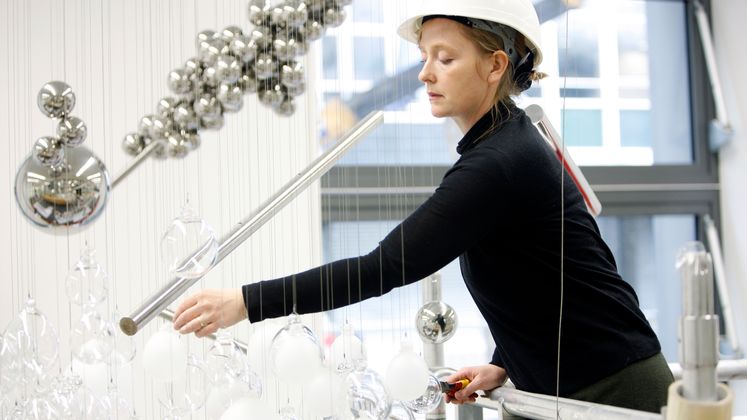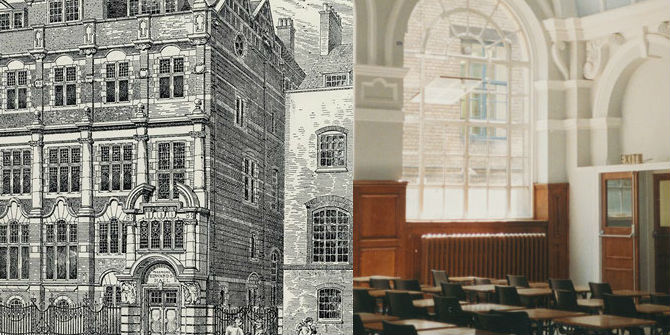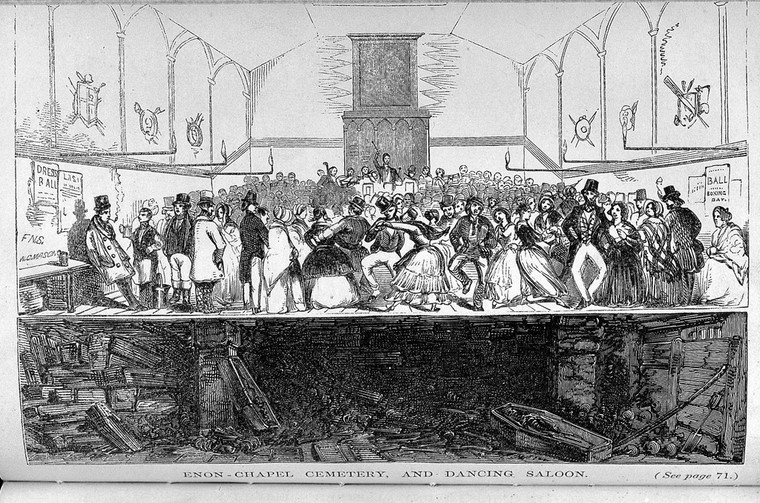In the Main and Lower Atrium of the Cheng Kin Ku Building you can look up at Elenchus/Aporia created from red, steel and glass spheres linked by steel. LSE Archivist, Sue Donnelly investigates the meaning behind the art work.
Elenchus: 1. A logical refutation 1.1 The Socratic method of eliciting truth by question and answer, especially as used to refute an argument.
Aporia: 1 An irresolvable internal contradiction or logical disjunction in a text, argument, or theory. 1.1 The expression of doubt.
Oxford English Dictionary
The Cheng Kin Ku Building (first called the New Academic Building and officially renamed in 2023) was originally designed by Henry Tanner (1849-1935), Principal Surveyor of the Ministry of Works, for the Office of the Public Trustee and the Lunacy Commissioner. The building was vacant for some years before its transformation into a teaching and research space for LSE by Grimshaw Architects.

The Queen’s opening of the New Academic Building in November 2008 also marked the inauguration of a new art work by the Irish artist, Joy Gerrard, Elenchus/Aporia displayed in both the main and lower atria.
The entire work consists of 500 individual pieces. In the main atrium the centrepiece is a suspended polished red 3 metre sphere with a 1.5 metre cluster of polished, reflective steel globes attached to a polished steel rod. In the lower atrium combinations of clustered, polished steel and glass balls and globes of different sizes and polished and painted steel bars are hung in an informal manner and can be glimpsed through the windows from the street.

The title refers to a form of co-operative argumentative dialogue between individuals – an asking and answering of questions – designed to inspire critical and creative thought. In the LSE magazine for 2008, the Contemporary Arts Society explained that the giant globes “represent major economic or political concepts, echoed around the atrium in smaller constellations of glass and steel that suggest the linguistic relation between a formal utterance or statement, and how ideas travel, prompting meaningful debate”.
For the artist Joy Gerrard, “It represents ideas or discussions around political concepts and is echoed in smaller constellations of glass and steel around the three storey atrium.”

The work was commissioned by the School with the support of the Contemporary Arts Society. The artist Joy Gerrard was born in Ireland in 1971 and after studying art in Cork and Dublin gained an MA and M Phil from the Royal College of Art in Dublin. She has exhibited widely in Ireland and Britain. Her most recent exhibition was Fractured Crowd at Wexford Arts Centre. She is interested with ideas around public debate and has been involved with several public art works for Tideway in London (2018) and Chelsea and Westminster Hospital (2012).
Opened in 2008, the New Academic Building was renamed the Cheng Kin Ku Building in 2023.





